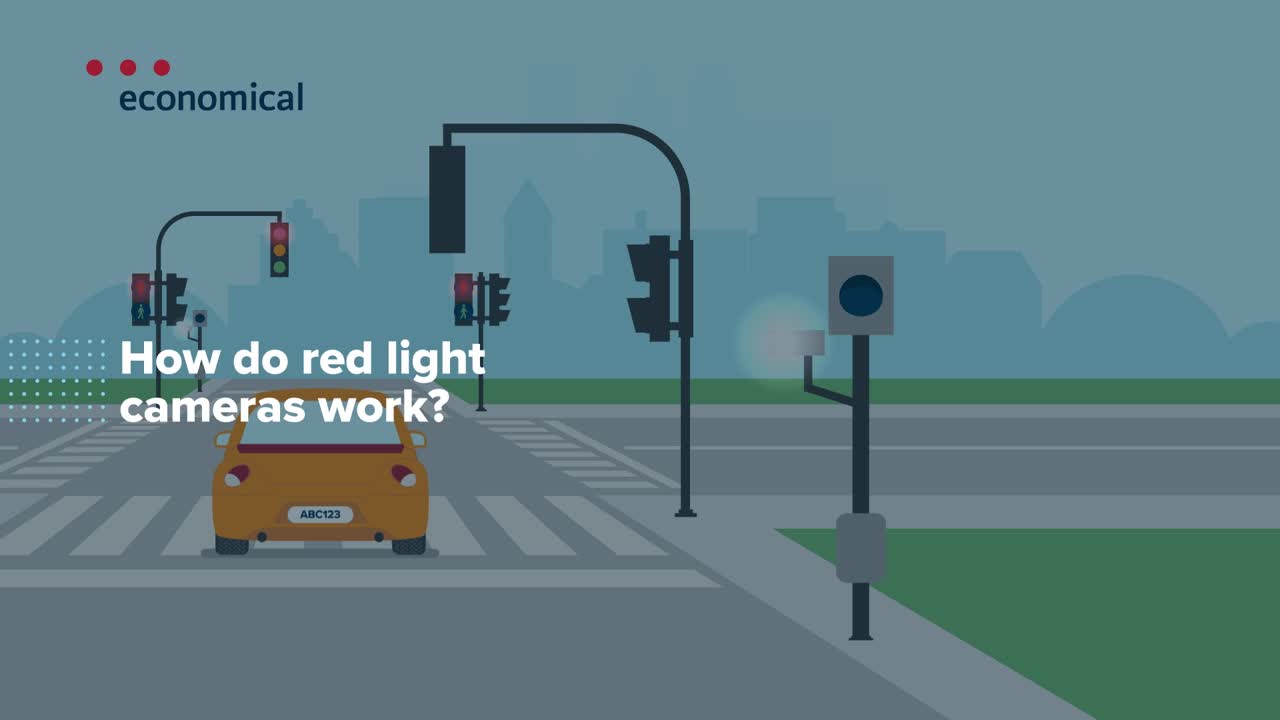Red light cameras (short for “red light running cameras”) are used to prevent drivers from running red lights at some of the most collision-prone intersections across Canada. The goal is to lower the number of accidents that happen because of red light running.
Although the specific features and rules of red light cameras vary by location, the way they work, the way you’re ticketed, and their effectiveness are fairly standard across the country.
Let's take a look at how red light cameras work

Red light cameras are designed to photograph vehicles that enter a specific intersection after the traffic light has turned red. If you’ve been sitting in the intersection waiting to turn left since the light was green or yellow and it goes red as you’re turning, you’re probably safe. If you’re turning right at a red light, you could trigger the camera if you don’t stop and take the time to look both ways before moving into the intersection.
Generally speaking, red light cameras are either mounted on a free-standing pole near the intersection or attached directly to the traffic light stand. When the light is red, sensors that are embedded under each lane of traffic trigger the camera when a vehicle drives over the stop line. Then, the camera snaps a photo of the vehicle’s rear licence plate.
Before the introduction of red light cameras in the late 1990s, the only way to fine someone who ran a red light was to have a police officer chase them through the intersection, which can be dangerous for everyone on the road. While red light cameras certainly don’t replace police officers at intersections, they can be a much safer way to ticket red light runners.
What happens when a red light camera takes a photo?
Once the camera snaps a photo of your licence plate, the picture is reviewed by a trained officer who makes sure you were actually running the red light. Within about a month, a ticket (usually for around $300) is sent to the address listed on the vehicle’s registration.
Since red light cameras typically only capture the licence plate and not the driver’s face, the vehicle’s registered owner is on the hook no matter who was driving. So, if your buddy runs a red light when he borrows your car, you’ll be responsible for paying the ticket — and there’s no way to have it transferred to him instead.
Luckily, when your vehicle is caught on a red light camera versus being chased down by a police officer, the ticket issued is more like a hefty parking ticket than a traffic ticket. It likely won’t result in any demerit points against your licence since you weren’t necessarily the one driving, but you do have to pay it or you could run into trouble when you try to renew your plates and it may affect your car insurance premium.
Do red light cameras really prevent accidents?
Signs are often used to warn drivers of upcoming red light cameras, which can make drivers extra cautious when approaching an intersection with a camera. Although red light cameras don’t physically stop drivers from running red lights, they do deter them from doing so — and the following stats show that the number of accidents caused by red light runners has been on the decline:
- Toronto has more than 300 active red light cameras. The number of angle collisions causing death, personal injuries, or property damage has reduced by more than 60% at camera locations.
- The Region of Waterloo has 15 active red light cameras. The numbers of angle collisions and turning collisions caused by disobeying traffic signals have decreased by 27% and 60%, respectively . However, the Region of Waterloo also saw a 23% increase in rear-end collisions, showing just how important it is to approach intersections carefully and avoid slamming on the brakes.
- Saskatoon has four active red light cameras. There has been a 9% reduction in injury and fatality rates at intersections with cameras, as well as a 12% decrease in right-angle collisions.
- Calgary has more than 50 intersection safety cameras (which track red light running and a driver’s speed at green lights). Between 2000 and 2013, total collisions at camera locations decreased by 7% — and fatal collisions decreased by 100%!
Running the odd red light does more than just put you and everyone else on the road at risk — it can also hit your wallet pretty hard. If you race through a red light and cause a collision, you could be looking at further charges and an increased premium on top of the original ticket.
When it comes to your insurance, not all traffic tickets are treated the same. Wondering how a particular infraction could affect your rates? Reach out to your group’s insurance broker to find out.
Share this article on Facebook or Twitter to show other drivers how red light cameras work, too.